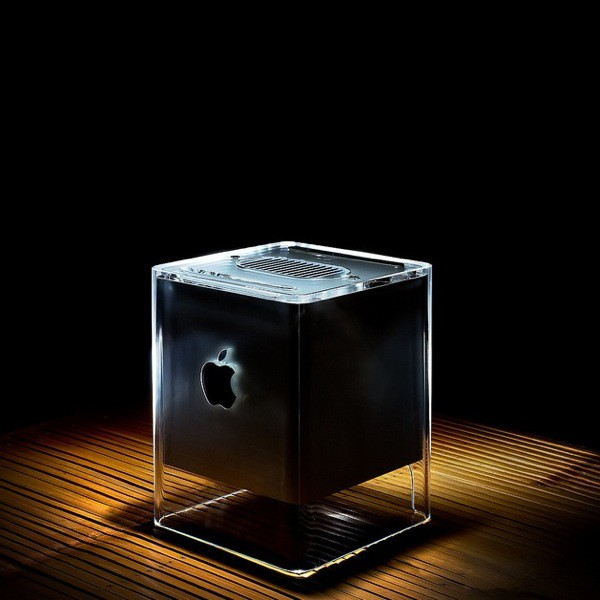

The Cube was an important product to Apple, and especially to Apple CEO Steve Jobs, who said the idea for the product came from his own desires as a computer user for something between the iMac and Power Mac G4. Development Īccess to the computer's internal components is gained by using a handle to pull the computer out of its plastic shell. Access to the machine's internal components is accomplished by inverting the unit and using a pop-out handle to slide the entire internal assembly out from the shell. These ports and the power cable are located on the underside of the machine. Despite its size, the Cube fits three RAM slots, two FireWire 400 ports, and two USB 1.1 ports for connecting peripherals in its frame.
Apple mac cube serial#
Instead, the Cube shipped with round Harman Kardon speakers and digital amplifier, attached to the computer via Universal Serial Bus (USB). The power supply is located externally to save space, and the Cube features no input or outputs for audio on the machine itself. To fit the components of a personal computer in the case's confined space, the Cube does not feature expansion slots it does have a video card in a standard Accelerated Graphics Port (AGP) slot, but cannot fit a full-length card. A higher-end model with a 500 MHz processor, double the RAM, and a 30 GB hard drive was available only through Apple's online store.
Apple mac cube pro#
The base model shipped with a 450 MHz PowerPC G4 processor, 64 MB of random-access memory (RAM), 20 GB hard drive, and an ATI Rage 128 Pro video card. Instead, it is passively cooled, with heat dissipated via a grille at the top of the case. The machine has no fan to move air and heat through the case. The Cube requires a separate monitor with either an Apple Display Connector (ADC) or a Video Graphics Array (VGA) connection. The enclosure houses the computer's vital functions, including a slot-loading optical disc drive. The designers intended the transparent plastic to give the impression that the computer is floating.

The Power Mac G4 Cube is a small cubic computer, suspended in a 7.7×7.7×9.8 in (20×20×25 cm) acrylic glass enclosure. The Power Mac G4 Cube with power supply and peripherals announced in tandem with the computer. The Museum of Modern Art, located in New York City, holds a G4 Cube as part of its collection. However, it ultimately proved influential to future Apple products, from the iPod to the Mac Mini. The Cube was one of the rare failures for the company under Jobs, after a successful period that brought the company back from the brink of bankruptcy. The product was an immediate commercial failure, selling only 150,000 units before production was suspended within a year of its announcement. The Cube won awards and plaudits for its design upon release, but reviews noted the high cost of the machine compared to its power, its limited expandability, and cosmetic defects. The Cube was announced to the general public at the Macworld Expo on July 19, 2000.
Apple mac cube professional#
Apple positioned the Cube in the middle of its product range, between the consumer iMac G3 and the professional Power Mac G4. Apple's designers developed new technologies and manufacturing methods for the product-a 7.7-inch (20 cm) cubic computer housed in clear acrylic glass. Designed by Jonathan Ive, the Cube was conceived by Apple chief executive officer ( CEO) Steve Jobs, who held an interest in a powerful, miniaturized desktop computer. The Power Mac G4 Cube is a Macintosh personal computer sold by Apple Computer, Inc.


 0 kommentar(er)
0 kommentar(er)
